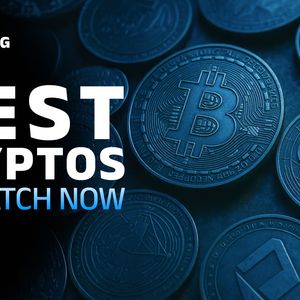Brazilian University Research Paper: XRP Processed Billions Via Ripple and Bitso Partnership
3 min read
A new academic paper from Brazil’s prestigious Fundação Getulio Vargas (FGV) University has validated the growing role of XRP and blockchain-based solutions in revolutionizing cross-border remittances. The study spotlights Ripple’s collaboration with Bitso , a leading Latin American crypto exchange, showcasing how blockchain is transforming payment corridors, particularly between the U.S. and Mexico. Academic Spotlight on Ripple and Bitso’s Cross-Border Model The FGV research underscores how digital assets and stablecoins are disrupting traditional remittance systems by cutting costs, accelerating transactions, and improving transparency. Central to the study is the partnership between Bitso and Ripple, which leverages RippleNet’s On-Demand Liquidity (ODL) solution to facilitate seamless cross-border payments using XRP as a bridge currency. Headquartered in Mexico, Bitso plays a critical operational role in this framework. Through ODL, U.S. dollars are converted to XRP, sent across the border, and then converted to Mexican pesos, bypassing intermediaries and enabling near-instant settlement. According to the research, this system has already processed billions of dollars in remittances, providing users with significantly lower fees and faster delivery compared to conventional financial channels. This model reflects XRP’s practical utility—not as a store of value, but as a liquidity facilitator capable of removing friction from international transfers. Research paper out of Fundação Getulio Vargas Universidade, Brazil about stablecoins and remittances also mentions Bitso & #Ripple leveraging #XRP via ODL. pic.twitter.com/LCV8SFnS9P — WrathofKahneman (@WKahneman) June 9, 2025 XRP vs. Stablecoins: Different Tools for Cross-Border Efficiency The paper also highlights the expanding use of stablecoins in remittances, citing Tether (USDT) as the most widely used stablecoin globally. While stablecoins offer fiat-backed price stability and are increasingly used in payments, they often rely on centralized issuers and traditional banking rails, which can reintroduce bottlenecks. In contrast, Ripple’s ODL model enables direct currency exchange without the need for pre-funded accounts. This gives XRP a unique advantage in regions like Latin America, where conventional banking infrastructure may be limited and where remittances are a financial lifeline for millions. The researchers point out that both stablecoins and assets like XRP serve valuable but distinct roles in the emerging financial landscape. However, XRP’s capacity to provide real-time, trustless liquidity sets it apart as a tool purpose-built for global value transfer. We are on twitter, follow us to connect with us :- @TimesTabloid1 — TimesTabloid (@TimesTabloid1) July 15, 2023 Broader Implications for Blockchain and Financial Inclusion FGV’s endorsement of the Ripple-Bitso model contributes to a growing body of academic research supporting the use of decentralized technologies in mainstream finance. By highlighting a real-world use case that’s already moving billions, the paper strengthens the case for blockchain as a credible solution to longstanding inefficiencies in global payments. Beyond the technical benefits, the paper emphasizes the model’s contribution to financial inclusion. By eliminating reliance on intermediaries and enabling direct access to payment rails, Ripple’s ODL empowers individuals and small businesses in underserved regions to participate more fully in the global economy. This aligns closely with Ripple’s long-term mission: to create an internet of value where money moves as seamlessly as information. FGV’s research represents more than just academic interest, it marks a milestone in the institutional validation of XRP’s utility in real-world finance. As regulators, banks, and fintechs increasingly explore blockchain integrations, case studies like Ripple and Bitso’s partnership stand out as proven, scalable solutions. By removing friction from cross-border payments, Ripple’s ODL and XRP are not only solving legacy financial challenges, they’re laying the groundwork for a more inclusive and efficient global monetary system. The Brazilian university’s findings are clear: XRP is not theoretical. It’s operational, impactful, and already moving billions. Disclaimer : This content is meant to inform and should not be considered financial advice. The views expressed in this article may include the author’s personal opinions and do not represent Times Tabloid’s opinion. Readers are urged to do in-depth research before making any investment decisions. Any action taken by the reader is strictly at their own risk. Times Tabloid is not responsible for any financial losses. Follow us on Twitter , Facebook , Telegram , and Google News The post Brazilian University Research Paper: XRP Processed Billions Via Ripple and Bitso Partnership appeared first on Times Tabloid .

Source: TimesTabloid



